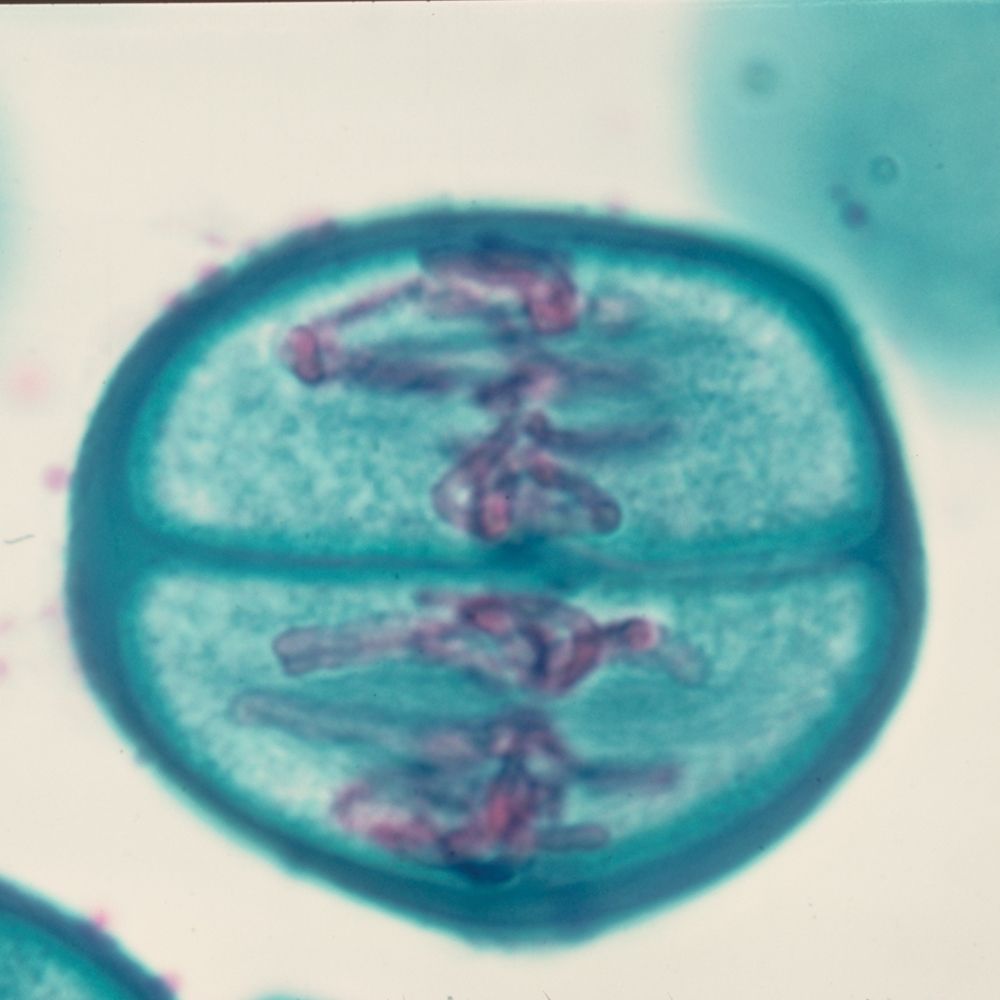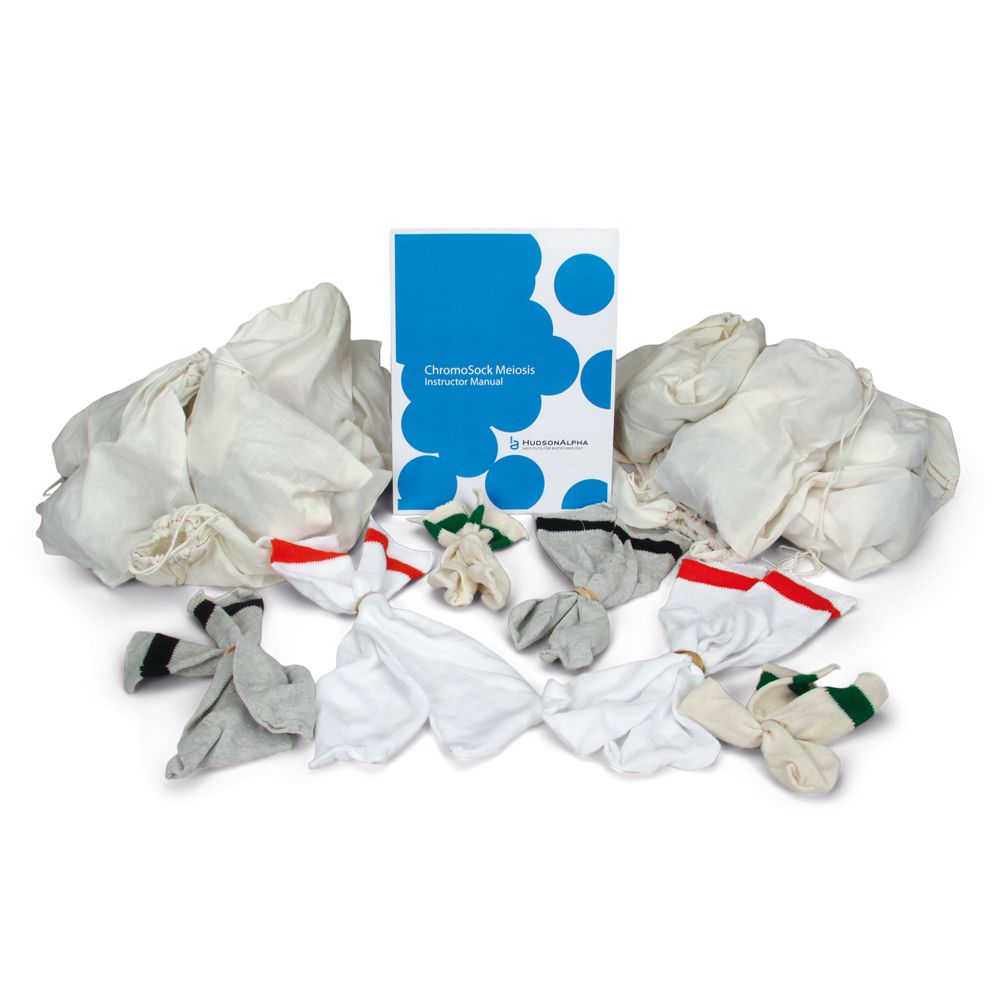Introduction
Have student groups use sock “chromosomes” and string to model mitosis and meiosis. These 2 simple activities take approximately 30 min to complete. Discussion questions and answers are provided so that you can assess student understanding of each type of cell division.
Next Generation Science Standards
- Life Science
- The Cell
- The Molecular Basis of Heredity
Follow-up
Students may struggle with understanding the difference between chromosomes, chromatids, and homologous pairs as they answer the discussion questions. Take a few minutes to discuss the differences between these terms as a class, using models or drawings to help. As with any scientific model, be sure to discuss the model’s limitations so that students do not develop misconceptions. For example, discuss mechanisms that prevent cells from becoming smaller as they divide (e.g., cells expand before division). String lengths and classroom space probably prevent modeling the proportions more accurately. Make sure that students are aware that the pinching of the cell membrane is characteristic of animal cell cytokinesis but that the process differs in plant cells.
As an extension of this activity, have students observe cells in various stages of mitotic and/or meiotic division. Consider using the Fish and Onion Mitosis Slide Set (item #308816) or the Mitosis and Meiosis Slide Set (item #308826).
Discussion questions and answers
Modeling Mitosis
- In interphase, how many chromosomes were present in the parent cell before replication and after replication?
Four chromosomes were present before and after replication in interphase. (There were 8 chromatids present after replication.) - How many chromosomes were present in each daughter cell? Are they genetically identical? Explain.
Four chromosomes were present in each daughter cell. They are genetically identical. This is because the chromosomes that were initially present were replicated and joined at the centromere. Identical chromatids were then split apart, resulting in genetically identical daughter cells. - In what areas of your body do you think mitosis occurs regularly? Give specific examples.
Mitosis occurs regularly in cells that are frequently damaged or lost. Skin cells, cheek cells, and cells lining the digestive tract are examples of cells that undergo regular mitotic division.
Modeling Meiosis
- In interphase, how many chromosomes were present in the parent cell before replication and after replication? How many homologous pairs were present?
Four chromosomes were present in the parent cell before and after replication. Two homologous pairs were present. - After meiosis I, how many chromosomes were present in each of the 2 daughter cells? Were homologous pairs present in the new daughter cells?
Two chromosomes were in each daughter cell. Homologous pairs were not present in the daughter cells. - After meiosis II, how many chromosomes were present in each of the 4 daughter cells?
Two chromosomes were in each of the four daughter cells. - What type of cell is formed by meiosis? Why is it important for the daughter cells to have half the number of chromosomes as the parent cell?
Meiosis forms sex cells (also called gametes, or sperm and egg cells). It is important that these cells have half the number of chromosomes as the parent cell because during fertilization an egg and a sperm cell merge, doubling the number of chromosomes in the resulting cell. This allows formation of a zygote with the number of chromosomes needed for development of the embryo.
SHOP THE KIT
ADDITIONAL REFERENCE KITS
EXPLORE MORE ACTIVITIES
GET FREE ACTIVITIES TO YOUR INBOX
About The Author
Carolina Staff
Carolina is teamed with teachers and continually provides valuable resources–articles, activities, and how-to videos–to help teachers in their classroom.






